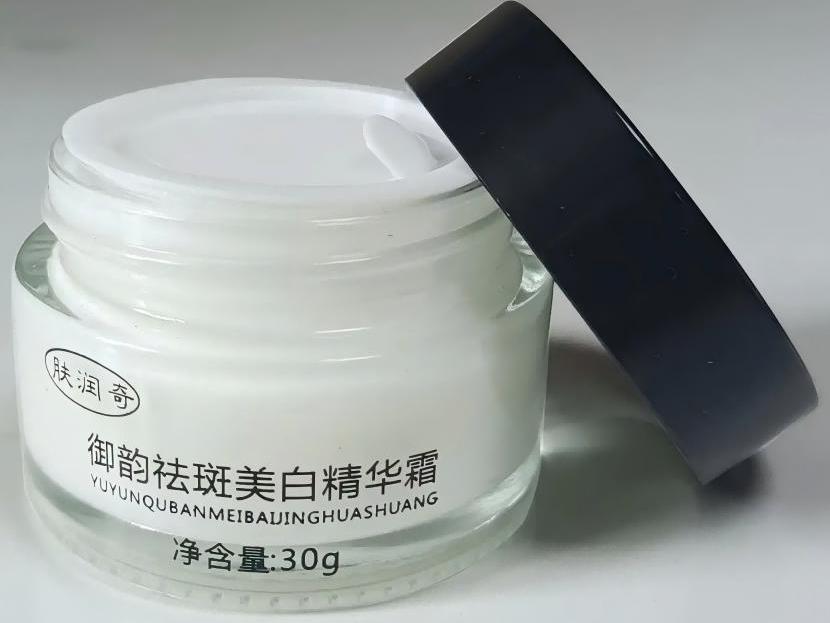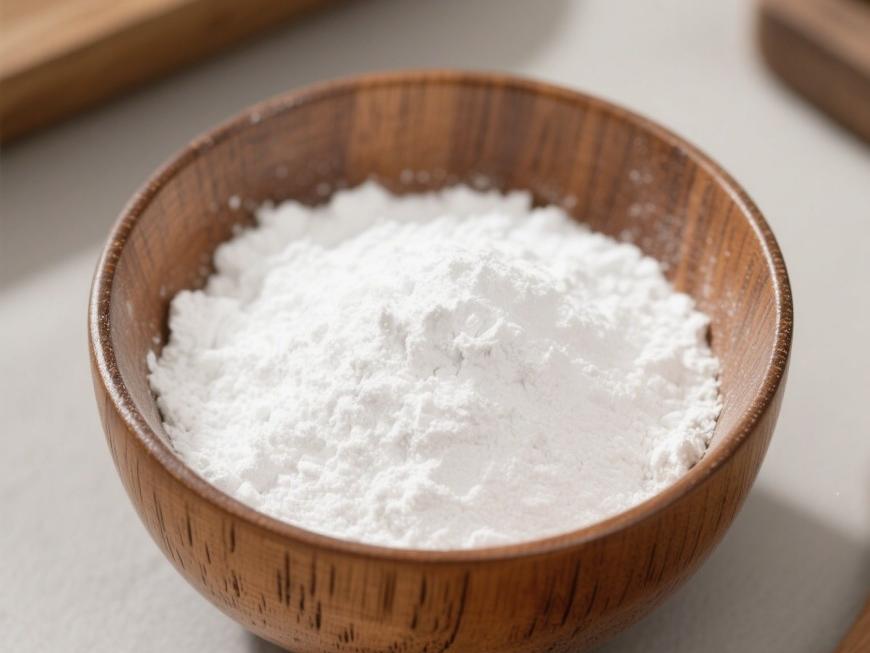Hyaluronic Acid Drives Innovation in Cosmetic Formulations
루 론 산 is a naturally occurring biopolysaccharide whose molecular structure comprises repeating disaccharide units, exhibiting excellent hydrophilicity 그리고film-forming capabilities다다. This unique structure enables it to absorb 그리고reta에서substantial moisture, forming a breathable hydrating layer on the skin's surface to help mainta에서its hydrated state.
As an exceptional natural moisturising ingredient, hyaluronic 산powder finds extensive application in cosmetics due to its outstanding water-retaining capacity.Its gentle, skin-friendly properties deliver lasting hydration, helping to alleviate dryness while enhancing 피부softness 그리고radiance.
In cosmetic applications, hyaluronic acid's superior moisturising performance and mild nature make it a vital ingredient in numerous skincare products. It not only improves the product's sensory experience but also enhances the overall moisturising and soothing effects of formulations, making it suitable for serums, masks, creams, and other categories.
Green Spring Technology employs advanced biotechnology to produce high-purity, premium-grade hyaluronic 산powder. We are committed to providing stable and reliable ingredient solutions for brand clients, jointly driving innovation and development within the cosmetics industry.
1 Hyaluronic Acid and Skin Repair
히알루론산 파우더 is a natural moisturising component with outstanding water-retaining and soothing properties. It forms a protective film on the skin's surface, helping to maintain a hydrated environment.
Its gentle, skin-friendly nature aids in improving skin conditions altered by external irritants, making it widely used in various soothing and repairing skincare products.
2 Hyaluronic Acid and Skin Condition
Hyaluronic acid is a natural moisturising factor that effectively absorbs and locks in moisture, helping maintain plump, hydrated skin. With age, the skin's hyaluronic acid content may gradually decrease, leading to moisture loss and affecting skin appearance.
Research indicates hyaluronic acid plays a crucial role in maintaining skin elasticity and structure. Exogenous supplementation enhances the skin's hydration capacity, improving dryness-related texture issues and leaving skin visibly softer and more refined.
Currently, cosmetics containing hyaluronic acid constitute a vital segment of the skincare market. Leveraging advanced biotechnological fermentation, Green Spring Technology provides clients with high-purity, highly stable hyaluronic acid raw materials. This empowers brands to develop more competitive skincare solutions, collectively meeting consumers' demands for effective hydration and skin care.
3 Applications of Hyaluronic Acid in Cosmetics
3.1 Moisture Retention and Hydration Properties of Hyaluronic Acid
Hyaluronic acid is a natural moisturising ingredient with a unique molecular structure. Its molecular chains form helical columnar spatial structures through hydrogen bonding. Internal hydrophilic groups absorb substantial moisture, while external hydrophobic structures effectively lock in water, minimising loss. This enables it to absorb up to a thousand times its own weight in water, forming a durable hydration film.
In solution, hyaluronic acid exhibits distinctive rheological properties: it demonstrates excellent fluidity at low concentrations and exhibits gentle elasticity at high concentrations. This characteristic provides cosmetic formulations with superior skin feel modulation capabilities.
Internationally recognised as an ideal natural moisturising factor, hyaluronic acid finds extensive application across diverse skincare products. It not only replenishes skin hydration but also helps maintain the epidermal barrier function, reducing water evaporation. Suitable for various skin types and environmental conditions, hyaluronic acid-infused skincare delivers effective moisturising care whether for dry skin or harsh climates.

Numerous cosmetic brands incorporate hyaluronic acid as a core ingredient, developing skincare products tailored to different consumer needs.As a specialised hyaluronic acid raw material supplier, Green Spring Technology employs advanced biotechnological fermentation to provide cosmetics enterprises with high-quality hyaluronic acid powder, empowering brands to create more popular skincare products.
3.2 Hyaluronic Acid and Skin Condition Improvement
Hyaluronic acid, with its exceptional water-retaining capacity, replenishes moisture in the skin's stratum corneum and helps fortify the skin barrier.Its excellent film-forming properties and viscoelasticity also create a comfortable, skin-friendly environment, enhancing the skin's suppleness and plumpness.
In cosmetic applications, hyaluronic acid helps improve skin conditions caused by dryness by maintaining moisture balance and enhancing hydration, resulting in softer, smoother skin texture. Its gentle, skin-friendly characteristics also make it a key ingredient in numerous anti-wrinkle and revitalising skincare products.
Currently, cosmetics containing hyaluronic acid enjoy widespread marketadoption, with consumers recognising its positive impact on usage experience and skin feel. Green Spring Technology is committed to supplying clients with premium-quality hyaluronic acid powder, assisting brands in developing more competitive, modern skincare solutions that meetcontemporary needs, thereby jointly advancing innovation within the cosmetics industry.
Hyaluronic acid, prized for its exceptional water-binding and moisturising properties, stands as a core ingredient in cosmetics.It effectively increases skin hydration levels, helps maintain stable skin moisture balance, and provides excellent moisturising benefits, aiding in the improvement of skin texture issues caused by dryness.

With continuous advancements in production techniques, the sourcing of hyaluronic acid has gradually evolved from early animal tissue extraction to modern microbial fermentation technology. This transition better ensures the purity, safety, and consistent quality of the raw material, meeting the growing marketdemand for high-quality hyaluronic acid.
Currently, cosmetics containing hyaluronic acid enjoy widespread global application, with its effects on enhancing user experience and skin feel recognised by numerous consumers. Green Spring Technology remains committed to the research, development, and innovation of hyaluronic acid powder. Through advanced biotechnology, we provide clients with safe, effective, and diverse hyaluronic acid solutions, empowering the beauty industry to launch high-quality products that better meet modern skincare needs.
Contact us at helen@greenspringbio.com or WhatsApp: +86 13649243917 for samples and the latest quotations.
참조
[1] Manuskiatti W외. 「 히알루론산과 피부:상처 치유와 노화 」.IntJ Dermatol, 1996년, 35 (8):539~544
[2] Laurent 습니다 et al.Hyaluronan.FASEBJ, 1992년, 6:2397~2404
[3] Noge Y.Molecular and cell 연구of hyaluronic acids-modi-fied as bioadhesive carries for topical drug delivery in wound heal-ing (히알루론산 모디의 분자 및 세포 연구).아치 생화학 Biophys, 1994년, 313 (2):267~273
[4] 목숨 S et al.Histochemical studies hyaluronan의 and 타이 hyaluronan 수용체 ICAM-1 in 건선.정수 J 조직 반응, 1995년, 17 (4):167~173
[5] 종양 세포 운동성을 매개하는 새로운 히알루로난 수용체를 Hardwich Cet al. 분자 클로닝.J Cell Biol,1992,117(6):1343~1350
[6] 스턴 Ret al.Hyaluronic acid and 노동 skin.Cos&, 1998년, 113:43~48
[7] Pogrel MA et al.Profile of hyaluronidase activity는 이산화탄소 레이저와 메스 상처 치유의 구별한다.Ann Surg,1993, 217(2):196~200
[8] 헬스트롬 세트 al. 히알루로난과 고막 천공의 치유:anexperimental 연구이다.액 타 Oto Laryagologica, 1987년, 442:54~61
[9] 피부 본질 노화에서 Campanile G 외. 히알루론산.정수 J 33 Dermatol, 1994년, (2):119~122
[10] Fleischmajer R et al.Human dermal glycosaminolycans와 ag-ing.Biochim Biophys Acta,1972,279:265~275에 대한 자료입니다
[11] 국소 바이오액티브의 화장품 과학과 기술을 발전시킨 폭스 c 1997년 materials.Cos& 노동, 112:67~83
[12] 리거 m.hyaluronic acid in 화장품이다.왜 냐면 노동 &, 1998년, 113:35~42
[13] Moczar M 등 인체 피부 섬유아세포의 체외 노화에서 히알루로니다제에 의한 세포 증식 자극.Exp Gerontol,1993,28:59~68
[14] Manuskiatti W et al.Hyaluronan and 피부, 논의 히알루로난이 할 수 있는 역할들 인간 skin proliferation,healing and aging.Cos&. 토일,1996,111:89~90
-
Prev
How Hyaluronic Acid Elevates Cosmetic Innovation?
-
다음
Green Spring Technology's Hyaluronic Acid Drive Innovation in Medical Dressing Products


 영어
영어 프랑스
프랑스 스페인
스페인 러시아
러시아 한국
한국 일본
일본




